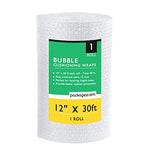You have no items in your shopping cart.
Plastic pollution has become a global environmental concern, and the need for sustainable alternatives has never been more pressing. Biodegradable bags offer a promising solution to this problem by providing a more eco-friendly option for consumers. In this comprehensive article, we will explore the world of biodegradable bags, their benefits, manufacturing process, and how they contribute to building a greener future.
What Are Biodegradable Bags?
Biodegradable bags are a type of packaging that can be broken down by natural processes into harmless substances over time. Unlike traditional plastic bags that can take hundreds of years to decompose, biodegradable bags are designed to minimize environmental impact by breaking down more rapidly, reducing the overall carbon footprint.
Advantages of Biodegradable Bags
Biodegradable bags offer numerous advantages over their non-biodegradable counterparts, making them a popular choice for environmentally conscious individuals. Here are some key benefits:
- Reduced Environmental Impact: Biodegradable bags have a significantly lower environmental impact compared to conventional plastic bags. By decomposing naturally, they help prevent plastic pollution in landfills, oceans, and ecosystems.
- Renewable Resource: Many biodegradable bags are made from renewable resources such as plant-based materials, including cornstarch and vegetable oils. This reduces reliance on fossil fuels and contributes to a more sustainable production cycle.
- Less Energy Consumption: The manufacturing process of biodegradable bags generally requires less energy compared to traditional plastic bags. This further reduces the carbon emissions associated with their production and disposal.
- Versatile Applications: Biodegradable bags can be used for various purposes, including grocery shopping, packaging, and waste disposal. Their versatility makes them a practical choice for both consumers and businesses.
- Promotes Circular Economy: Biodegradable bags support the concept of a circular economy, where resources are used, recycled, and reutilized. Their ability to break down and be transformed into organic matter aligns with the principles of a sustainable future.
Manufacturing Process of Biodegradable Bags
The production of biodegradable bags involves several stages, each contributing to the overall sustainability and eco-friendliness of the final product. Here is an overview of the typical manufacturing process:
- Material Selection: Biodegradable bags are often made from plant-based materials, such as cornstarch, potato starch, or polylactic acid (PLA). These materials are renewable, compostable, and provide a viable alternative to petroleum-based plastics.
- Extrusion: The selected material is melted and extruded into thin film sheets. During this process, additives like plasticizers, colorants, and reinforcement agents can be incorporated to enhance the bag's properties.
- Bag Formation: The extruded film is then converted into bags using specialized machinery. Different bag types, such as T-shirt bags, garbage bags, or produce bags, are produced based on specific customer requirements.
- Printing and Design: If desired, the bags can be customized with prints, logos, or branding. Water-based inks are typically used to ensure compatibility with the biodegradable properties of the bag.
- Quality Control: Throughout the manufacturing process, quality control measures are implemented to ensure the bags meet the required standards for strength, durability, and biodegradability.
- Packaging and Distribution: Once the bags pass the quality control checks, they are packaged and distributed to retailers or directly to consumers.
Proper Disposal and Biodegradability
While biodegradable bags offer significant environmental benefits, it is essential to understand their proper disposal methods to maximize their biodegradability. Here are some key points to consider:
- Composting: Biodegradable bags made from organic materials like cornstarch or PLA can be composted. They break down efficiently in composting facilities, turning into nutrient-rich soil.
- Industrial Facilities: Some biodegradable bags require specific industrial composting facilities for optimal decomposition. These facilities provide controlled conditions that accelerate the degradation process.
- Home Composting: Certain types of biodegradable bags can be composted in home composting systems. However, it is crucial to check the bag's specifications and ensure compatibility with the composting process.
- Landfill Disposal: If no composting options are available, biodegradable bags can be disposed of in landfills. While they may take longer to decompose in this setting, they still offer advantages over traditional plastic bags.
- Avoiding Contamination: To ensure proper biodegradability, it is crucial to separate biodegradable bags from regular plastic waste. Mixing them together can hinder the degradation process and reduce their environmental benefits.
Frequently Asked Questions (FAQs)
Q1: Are biodegradable bags more expensive than traditional plastic bags?
A1: Initially, biodegradable bags may be slightly more expensive due to the cost of production and sourcing sustainable materials. However, as demand increases and technology advances, the price difference is expected to decrease.
Q2: Can biodegradable bags be recycled?
A2: Biodegradable bags are designed for decomposition rather than recycling. However, some bags, such as those made from high-density polyethylene (HDPE), can be recycled if they are clearly labeled as recyclable.
Q3: Do biodegradable bags break down in water?
A3: Biodegradable bags generally require specific conditions, such as composting or industrial composting facilities, to break down effectively. While they may eventually degrade in water, the process can be significantly slower.
Q4: Are biodegradable bags suitable for carrying heavy items?
A4: The strength and load-bearing capacity of biodegradable bags vary depending on the material and manufacturing process. Some biodegradable bags are designed to be sturdy and can handle heavy items, but it is important to check the bag's specifications.
Q5: How long does it take for biodegradable bags to decompose?
A5: The decomposition time of biodegradable bags can vary depending on the material and environmental conditions. In ideal composting conditions, some bags can decompose within a few months, while others may take several years.
Q6: Can biodegradable bags be reused?
A6: Yes, biodegradable bags can be reused multiple times before they start to degrade. However, it is important to handle them with care to avoid tears or damage that could shorten their lifespan.
Conclusion
As we strive for a more sustainable future, the adoption of biodegradable bags plays a crucial role in reducing plastic pollution and minimizing the environmental impact of packaging materials. These bags offer a range of benefits, from their reduced carbon footprint to their ability to promote circular economy practices. By understanding their manufacturing process, proper disposal methods, and addressing common questions, we can make informed choices and contribute to a greener planet.








